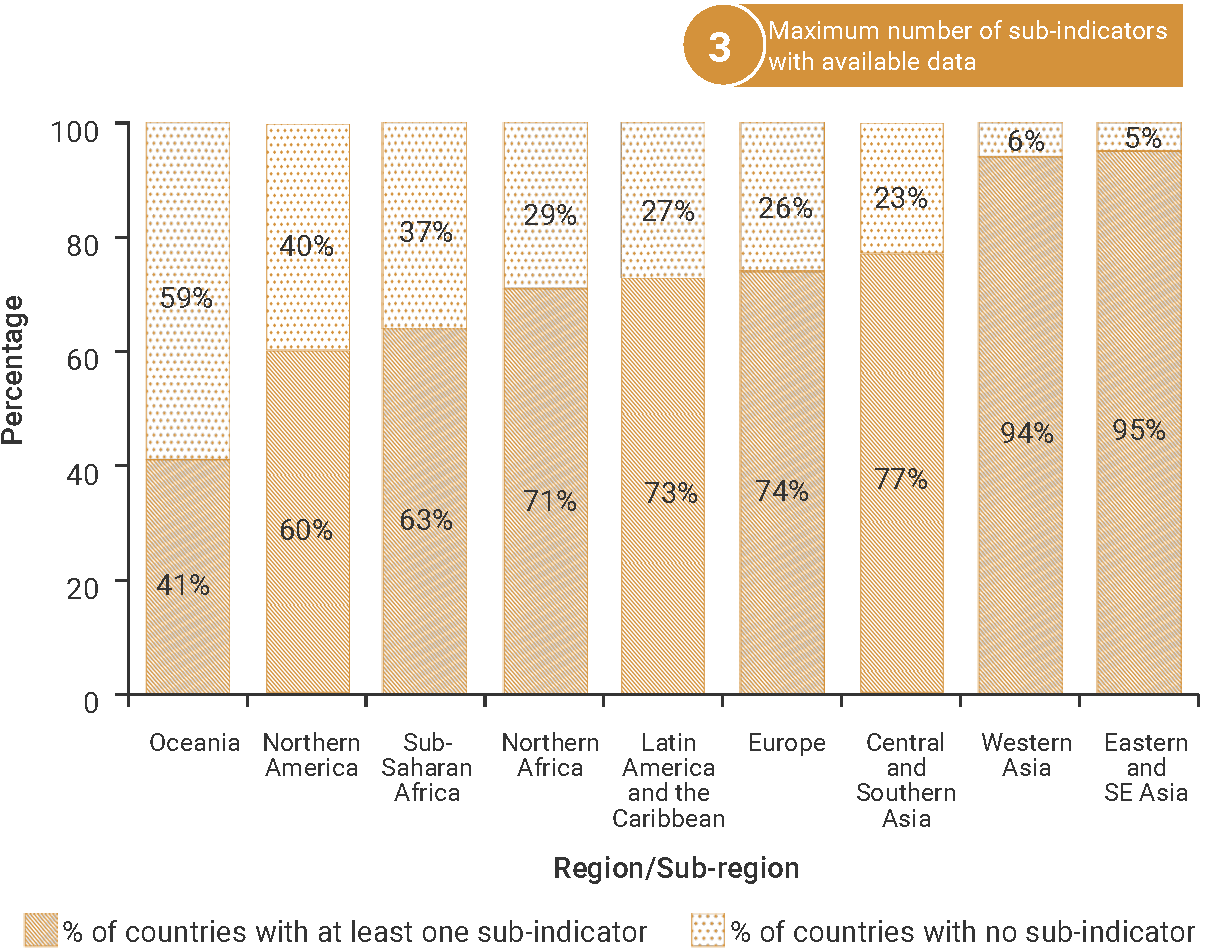SDG Indicator 12.b.1: Implementation of standard accounting tools to monitor the economic and environmental aspects of tourism sustainability
1. Key features and metadata
Definition: This indicator monitors the degree of implementation by countries of the Tourism Satellite Account (TSA) and the System of Environmental and Economic Accounts (SEEA) tables that are, to date, considered most relevant and feasible for monitoring sustainability in tourism
| Sub-indicator | Disaggregated by |
|---|---|
|
ST_EEV_STDACCT Implementation of standard accounting tools to monitor the economic and environmental aspects of tourism (Number of tables) |
No current data disaggregation available.
|
|
ST_EEV_ACCSEEA Implementation of standard accounting tools to monitor the economic and environmental aspects of tourism (SEEA tables) |
|
|
ST_EEV_ACCTSA Implementation of standard accounting tools to monitor the economic and environmental aspects of tourism (Tourism Satellite Account tables) |
Sources of information: Data is provided by national governments – usually National Statistical Offices (NSOs) and/or National Tourism Administrations – as regards the Tourism Satellite Account, and NSOs and/or Environment ministries as regards the SEEA tables, by way of an annual questionnaire sent by UN Tourism.
Related SDG Indicators: 8.9.1 (Tourism Direct GDP as a proportion of total GDP and in growth rate) and 15.9.1 ((a) Number of countries that have established national targets in accordance with or similar to Kunming-Montreal Global Biodiversity Framework Target 14; and (b) integration of biodiversity into national accounting and reporting systems).
2. Data availability by region, SDG Global Database, as of 02 July 2025

3. Proposed disaggregation, links to policymaking and its impact
| Proposed disaggregation | Link to policymaking | Impact |
|---|---|---|
|
Implementation of TSA tables by country and by table (1=YES; 0=NO)(UN 2010b):
Applies to:
|
The degree of development of TSA tables by countries provides a significant indication of a country’s statistical capacity for monitoring the economic sustainability of tourism. This disaggregation helps in following up on the ability of a country to issue a series of detailed macro and sectoral economic data on the size and direct economiccontribution of tourism in the economy of reference. It allows decision-makers to gauge the statistical capacities of countries to master international standards for the tourism satellite account(UN 2010b) and to be able to implement the forthcoming Statistical Framework for Measuring the Sustainability of Tourism(UN Tourism 2023) |
Monitoring this indicator provides the motivation to put in place the necessary statistical development in countries towards implementing SF-MST SF-MST is important for monitoring the interplay between tourism and sustainable development It not only focuses on the economic and environmental dimensions of tourism through the TSA and SEEA. It also focuses on the social dimension of tourism, allowing for a comprehensive picture of tourism’s role in sustainable development. While tourism contributes to creating valuable economic activities, revenues and jobs as well as promoting local cultural, historical and natural heritage, the development of sustainable consumption and production patterns in the sector is essential for ensuring its long-term economic and environmental viability This means supporting collaboration amongst stakeholders within the tourism sector to promote its sustainability performance and the application of policies, instruments, incentives, and technical options to prevent and mitigate harmful impacts of tourism(UN 2023d; UNEP 2024d) |
|
Implementation ofSEEA tables by country (1=YES; 0=NO)(UN 2014b):
Applies to:
|
The degree of development of SEEA tables by countries provides a significant indication of a country’s statistical capacity to monitor the sustainability of tourism by producing an initial set of four SEEA accounts relevant to tourism. The development of SEEA accounts relevant to tourism provides a good indication of a country’s statistical preparedness for monitoring the sustainability of tourism. It will support the compilation of the SF-MST and, as such, the derivation of useful information for decision-makers, the actors in the tourism sector and the public |
Reducing the statistical gaps in identifying the interactions between the economic, environmental and social dimensions of tourism and its activities would benefit the environment by focusing on the use of environmental resources, with a view to maintaining essential ecological processes, conserving biodiversity and reducing pollution |

